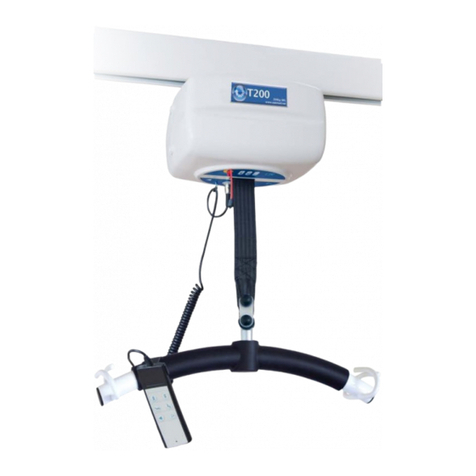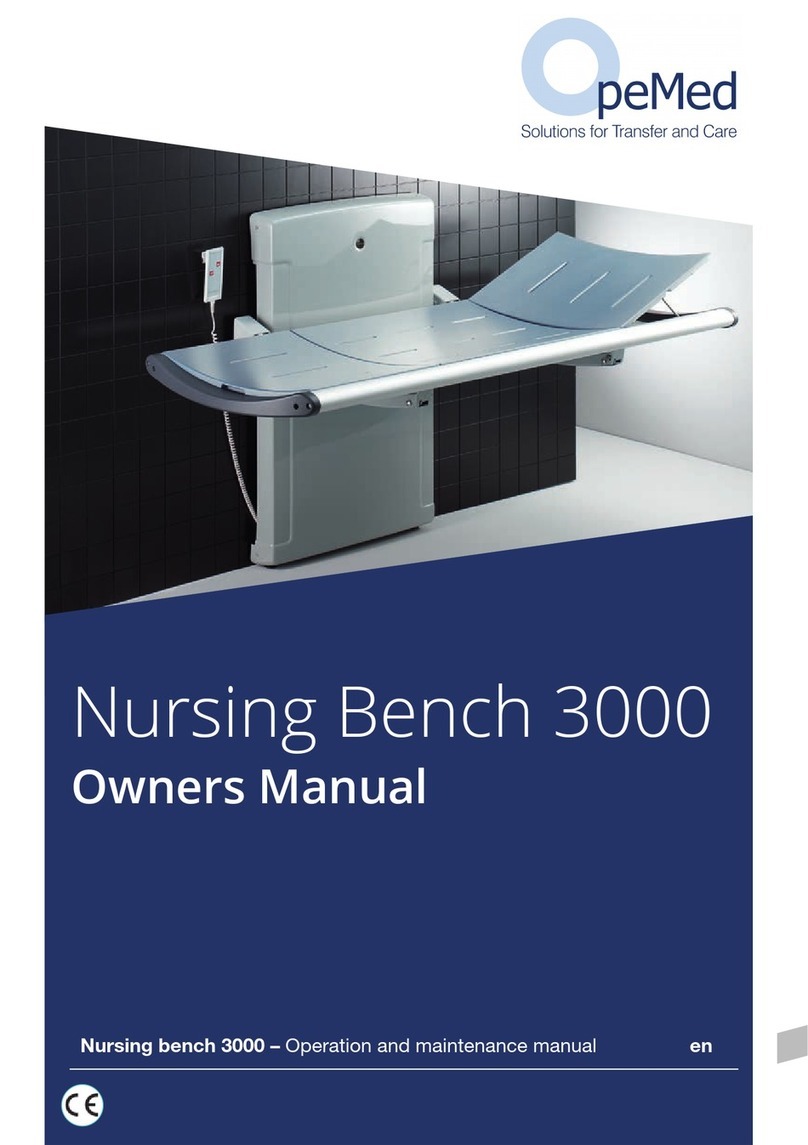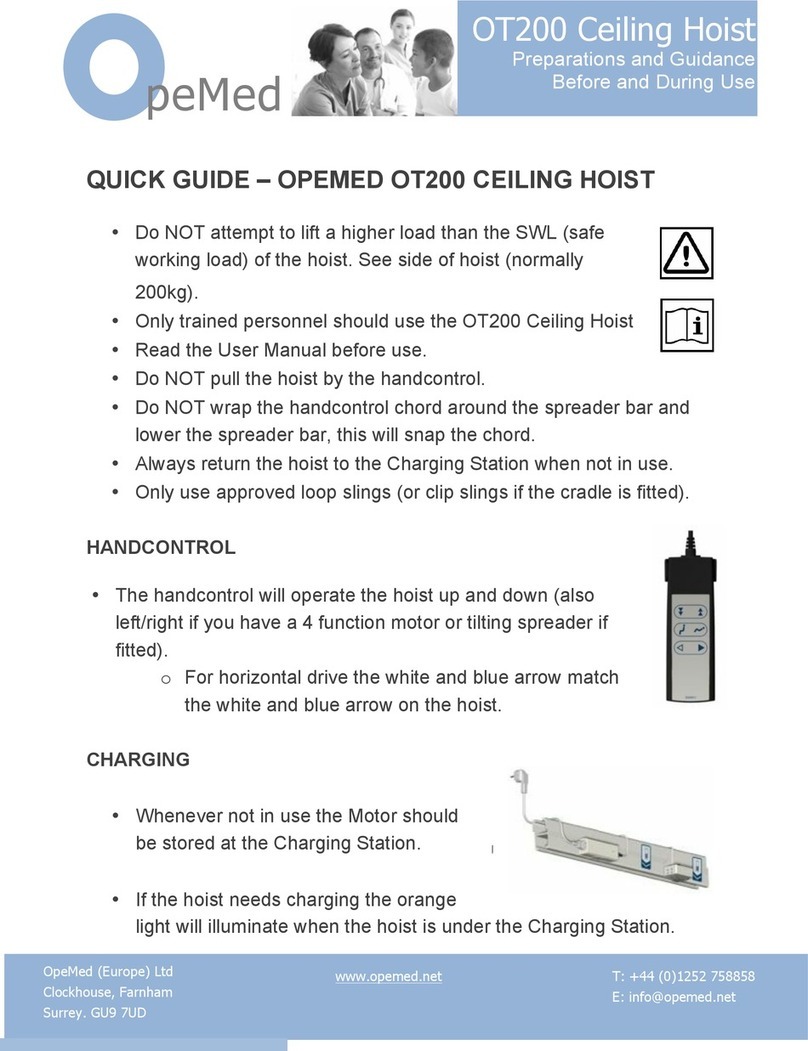2
• • • User Manual ref1109
Index Page
1 OT200 Compact Ceiling Hoist Manual - Introduction...........................................................4
1.1 About this Manual..................................................................................................................... 4
1.2 Symbols................................................................................................................................... 4
1.3 Contents of the Package ........................................................................................................... 4
1.4 The OT200 Ceiling Hoist............................................................................................................ 5
1.5 Points of Attention .................................................................................................................... 6
2 Description ...........................................................................................................................7
2.1 Charging and Life-Span of the Batteries ..................................................................................... 8
2.2 Capacity................................................................................................................................... 8
2.3 Emergency Cord (Figure 2 : No 10)............................................................................................ 8
2.4 Emergency Control ................................................................................................................... 8
2.5 Control Indicator Lights on the Hoist (Part 11)........................................................................... 9
2.6 Connecting the Hand-Held Control ............................................................................................. 9
2.7 Connecting the Powered Hanger Bar.......................................................................................... 9
2.8 Hand-Held Control .................................................................................................................... 9
3 Rail System .........................................................................................................................10
3.1 XY or H System for Room Coverage ......................................................................................... 10
3.2 Turntable (Optional) ............................................................................................................... 10
3.3 Gate (with X-Y Systems) ......................................................................................................... 10
3.4 Exchanger or Junction............................................................................................................. 10
4 Hanger Bar..........................................................................................................................11
4.1 STANDARD – 2 Point Spreader Bar .......................................................................................... 11
4.2 OPTIONAL – Manual Cradle..................................................................................................... 11
4.3 OPTIONAL EXTRA - Powered Cradle......................................................................................... 11
4.4 OT400 Hanger Bar.................................................................................................................. 11
5 Slings ..................................................................................................................................12
5.1 Sling Attachment .................................................................................................................... 12
5.1.1 LOOP SLINGS ................................................................................................................... 12
5.1.2 CLIP SLINGS..................................................................................................................... 12
6 Using the OT200 Ceiling Hoist............................................................................................12
6.1 Lifting From a Chair ................................................................................................................ 13
6.2 Lifting From a Bed .................................................................................................................. 13
6.3 Moving the Patient.................................................................................................................. 13
6.4 Taking the Patient Out of the OT200 / OT400........................................................................... 13
6.4.1 Step 1a Lifting Towards a Bed ........................................................................................... 13
6.4.2 Lifting Towards a (Wheel) Chair......................................................................................... 14
6.4.3 Lifting Towards a Toilet ..................................................................................................... 14
7 Maintaining the OT200 Ceiling Hoist..................................................................................14
7.1 Cleaning Instructions .............................................................................................................. 14
7.2 Daily/Weekly Maintenance....................................................................................................... 14
7.3 Annual Inspection and Maintenance......................................................................................... 14
7.4 If the OT200 Does Not Function .............................................................................................. 15
7.5 Disposal................................................................................................................................. 15
8 OT200 Specification............................................................................................................15
8.1 Technical Summary ................................................................................................................ 15
9 Warranty statements..........................................................................................................17































